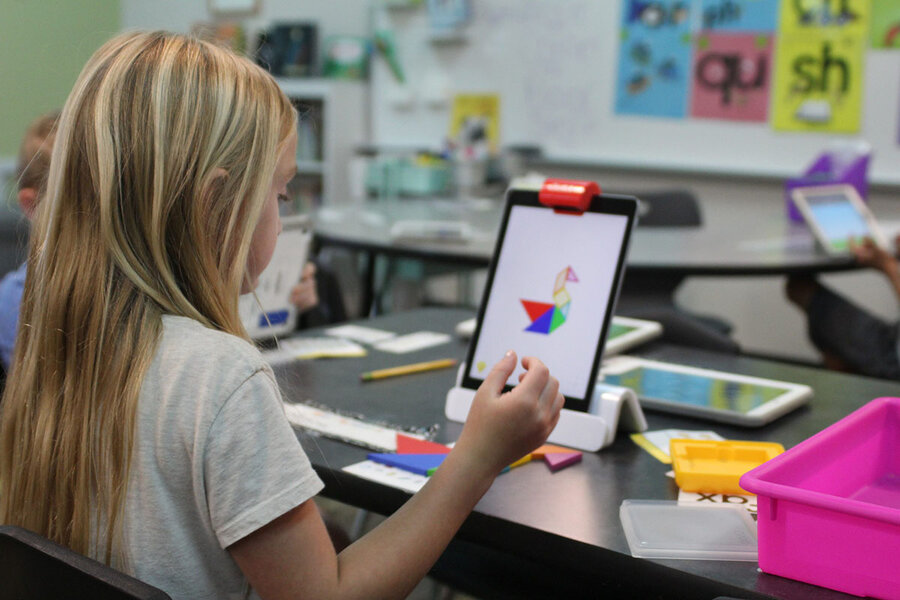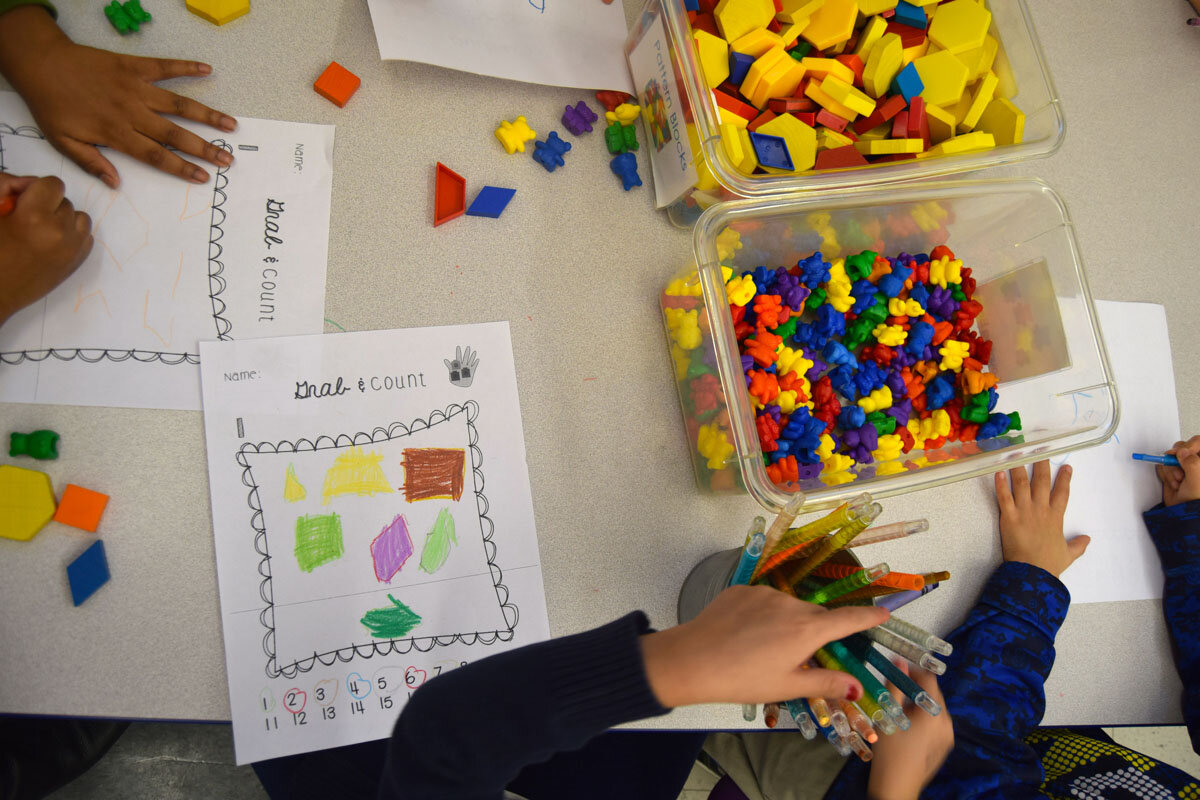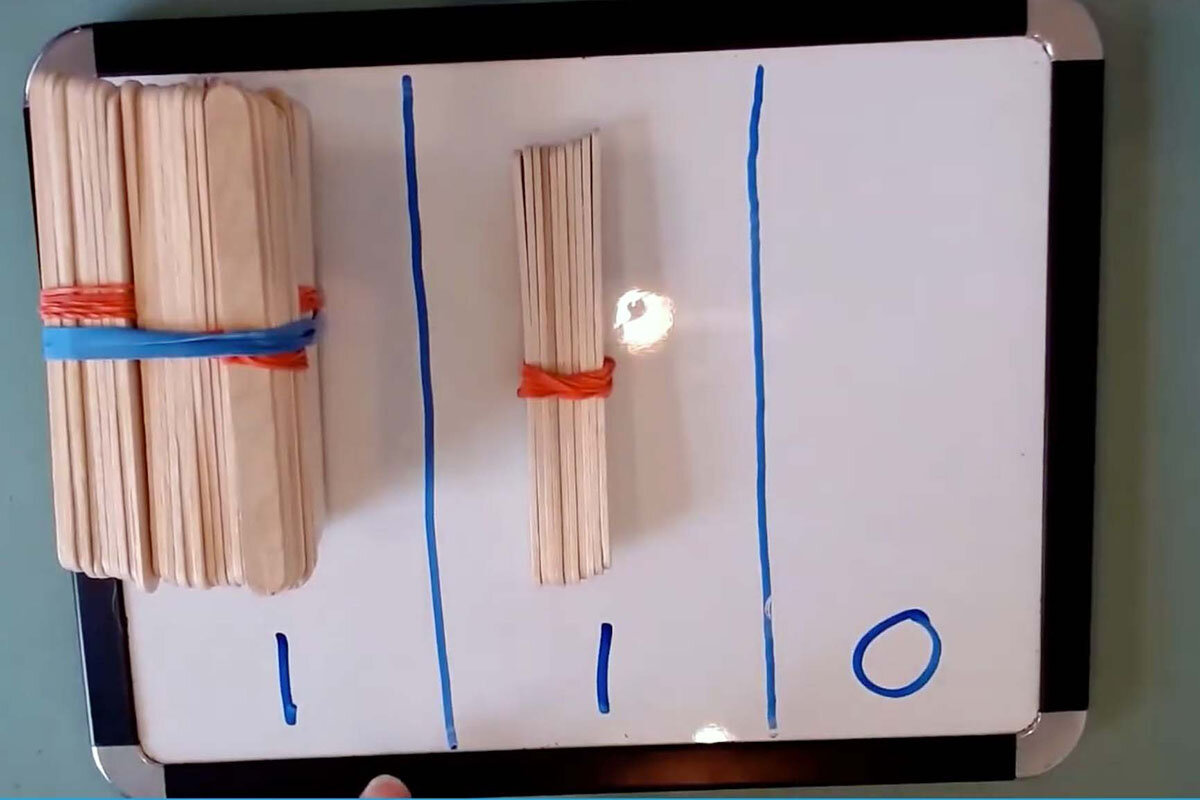Why math disabilities need more attention
Loading...
Laura Jackson became seriously concerned about her daughter and math when the girl was in third grade. While many of her classmates flew through multiplication tests, Ms. Jackson’s daughter struggled to complete her 1 times table. She relied on her fingers to count, had difficulty reading clocks and frequently burst into tears when asked at home to practice math flashcards. At school, the 9-year-old had been receiving help from a math specialist for two years, with little improvement.
“We hit a point where she was asking me, ‘Mom, am I stupid?’” Ms. Jackson recalls.
Then, when Ms. Jackson was having lunch with a friend one day, she heard for the first time about a disorder known as dyscalculia. After lunch, she went to her computer, looked up the term, and quickly came across a description of the learning disability, which impacts a child’s ability to process numbers, retain math knowledge, and complete math problems. “I was like, ‘Oh my gosh, this is my kid,’” she says.
Why We Wrote This
Disabilities in reading are identified and supported early on. But students who struggle in math don’t get the same attention. This story is part of The Math Problem, the latest project from the newsrooms of the Education Reporting Collaborative.
Nationwide, hundreds of thousands of students face challenges learning math due to math disabilities. There are often obstacles to getting help.
America’s schools have long struggled to identify and support students with learning disabilities of all kinds: Kids often languish while waiting to receive a diagnosis; families frequently have to turn to private, often pricey, providers to get one; and even with a diagnosis, some children still don’t get the supports they need because their schools are unable to provide them.
That’s slowly changing – for some disabilities. A majority of states have passed laws that mandate screening early elementary students for the most common reading disability, dyslexia, and countless districts train teachers how to recognize and teach struggling readers. Meanwhile, parents and experts say school districts continue to neglect students with math disabilities like dyscalculia.
“Nobody uses the proper term for it, it’s not diagnosed frequently,” says Sandra Elliott, a former special education teacher and current chief academic officer at TouchMath, a multisensory math program. “We’re all focused on literacy.”
Nationwide, teachers report that up to 40% of their students perform below grade level in math. And while students with math disabilities may be especially far behind, math scores for all students have remained dismal for years, showing that more attention needs to be paid to math instruction. Experts say learning the most effective methods for teaching students with math disabilities could significantly strengthen math instruction for all students.
“You’ve got a huge number of students that are in the middle ground,” when it comes to math achievement but may not have a disability, Dr. Elliott adds. Those students could also be helped by having explicit, multisensory instruction in math. “If it works for the students with the most severe disconnections and slower processing speeds, it’s still going to work for the kids that are in the ‘middle’ with math difficulties.”
Math disabilities vs. reading disabilities
Covid exacerbated the nation’s problem with math achievement. The number of children who are several years behind in math has increased over the past few years and achievement gaps have widened. For some students, learning struggles may be due to an underlying disability that affects math calculation or problem solving skills. Yet only 15% of teachers report that their students have been screened for dyscalculia.
“There’s not as much research on math disorders or dyscalculia,” as there is on reading disabilities, says Karen Wilson, a clinical neuropsychologist who specializes in the assessment of children with learning differences. “That also trickles down into schools.”
There are a host of reasons why math disabilities receive less attention than reading disabilities. Elementary teachers report more anxiety when it comes to teaching math, which can make it harder to teach struggling learners. Advocacy focused on math disabilities has been less widespread than that for reading disabilities. There is also a deep-seated societal belief that some people have a natural aptitude for math. “A lot of times, [parents] let it go for a long time because it’s culturally acceptable to be bad at math,” says Heather Brand, a math specialist and operations manager for the tutoring organization Made for Math.
Some signs of dyscalculia are obvious at an early age, if parents and educators know what to look for. In the earliest years, a child might have difficulty recognizing numbers or patterns. Children may also struggle to connect a number’s symbol with what it represents, like knowing the number 3 corresponds to three blocks, for example. In elementary school, students may have trouble with math functions like addition and subtraction, word problems, counting money, or remembering directions.
Still, schools may be resistant to assessing math disabilities, or unaware of their prevalence. Even after Ms. Jackson learned about dyscalculia on her own, her daughter’s Seattle-area public school was doubtful that the third grader had a learning disability because she was performing so well in all other areas. Teachers suggested Ms. Jackson spend extra time on math at home.
“For so many parents, they assume the school would let them know there’s an issue, but that’s just not how it works,” she says. (She ultimately wrote a book, “Discovering Dyscalculia” about her family’s journey, and now runs workshops for parents.)
Experts say universal screening, like those provided in many states for dyslexia, should be in place for math disabilities. Early diagnosis is crucial to provide children a stronger foundation in the early concepts that all math builds on. “Many times, if a student is caught early with the interventions that we all know work … these children can perform math, if not equal to their typically developing peers, they can get very, very close,” says Dr. Elliott from TouchMath.
“Systematic and explicit” instruction
As with other learning disabilities, a diagnosis is only the first step to getting children the help they need in school. In particular, students with dyscalculia often need a more structured approach to learning math that, like reading, involves “systematic and explicit” instruction and provides ample time to practice counting and recognizing numbers, says Lynn Fuchs, a research professor in special education and human development at Vanderbilt University. These students also may need strategies to help them commit math facts to memory, she adds.
To do this well, they often need small-group or one-on-one teaching, which is nonexistent in many schools’ math instruction. “It’s not the fault of schools. I think it has to do with the amount of resources schools have to provide intervention to children, and reading takes priority over math,” says Dr. Fuchs.
Part of the problem is that teachers don’t receive the training needed to work with children with math disabilities. Teacher training programs offer little instruction on disabilities of any kind, and even less on math. In a 2023 survey by Education Week, nearly 75% of teachers reported that they had received little to no preservice or in-service training on supporting students with math disabilities. At least one state, Virginia, requires dyslexia awareness training for teacher licensure renewal, but has no similar requirement for math disability training. “It’s pretty rare for undergraduate degrees or even master’s degrees to focus on math learning disabilities with any level of breadth, depth, quality or rigor,” says Amelia Malone, director of research and innovation at the National Center for Learning Disabilities.
Without more widespread knowledge of and support for dyscalculia, many parents have had to look for specialists and tutors on their own, which they say can be particularly challenging for math, and costly. Even after her daughter received a diagnosis, Ms. Jackson felt the girl’s school wasn’t supporting her enough. At school, her daughter’s math teacher demanded “tidy” math notebooks and discouraged drawing or doodling, activities that often helped the girl work through problems. In 2019, Ms. Jackson started pulling her daughter out of school for part of each day to teach her math at home. “I am not a math teacher, but I was so desperate,” Ms. Jackson says. “There’s no one who knows anything and we have to figure this out.”
She pored over materials online and reached out to math disability experts in America and abroad for help. She started infusing her daughter’s math lessons with games and brought out physical objects, like small wooden rods, to help her practice counting. She worked with her daughter on the core foundations of math, including number sense and basic operations, to help establish the solid grounding that the girl was missing.
Training early childhood teachers
Experts say it’s possible to improve math outcomes for those who struggle, if more attention and resources are poured into math in the early years to ensure children do not reach third grade – or beyond – without the support they need.
Yet early childhood teachers are often the least equipped to teach math, especially for children with dyscalculia, says Marilyn Zecher, a dyslexia specialist who created a multisensory approach to math based on the popular Orton-Gillingham approach in reading. Ms. Zecher offers training on dyscalculia-related teaching strategies for teachers of all grade levels. Many of her strategies for early educators emphasize that math instruction starts through language. Children learn the basics of mathematics when teachers give them opportunities to verbally compare similarities and differences between objects, and describe how items or activities occur in relation to each other, such as “before” or “after.”
“The early ed teachers are the giants upon whose shoulders everybody else stands,” Ms. Zecher says. Early educators, like preschool teachers, not only teach foundational skills, they are also “so critical to identifying children who are having difficulties.”
At Ms. Brand’s organization, Made for Math, intensive tutoring based on Ms. Zecher’s approach often stands in for a lack of school-based support. Teachers create individualized lesson plans for students during each tutoring session, employing a variety of items to help students better understand math concepts. Students might use craft sticks bundled together to learn place value, cubes to learn subtraction or addition, and items that can be physically cut apart, like foam stickers, to learn fractions. Math specialists at the organization have found that children with dyscalculia need repetition, especially to understand math facts. Some students attend tutoring up to four days a week, at a cost of up to $1,000 a month. “It’s hard because it’s not something schools are offering, and kids deserve it,” says Ms. Brand.
In recent years, a handful of states, including Alabama, West Virginia and Florida, have introduced legislation that would require schools to identify and support younger students who struggle with math, Dr. Elliott’s company, TouchMath, introduced a screener earlier this year that can identify signs of math disabilities in children as young as age 3.
Ms. Malone, from the National Center for Learning Disabilities, says there are pockets of progress around the country in screening more children for math disabilities, but movement at the federal level – and in most states – is “nonexistent.”
New York City is one district that has prioritized math disability screening and math instruction in the early years. In 2015 and 2016, the city spent $6 million to roll out a new math curriculum featuring games, building blocks, art projects, and songs. The district has also introduced universal math and reading screeners to try to identify students who may be behind.
Experts say that there are ways that all schools can make math instruction more accessible. In elementary schools, activities that involve more senses should be used more widely, including whole-body motions and songs for teaching numbers and hands-on materials for math operations. All students, and not only those with a disability, could benefit from using manipulatives to help visualize problems and graph paper to assist in lining up numbers.
As with dyslexia, figuring out better ways to teach kids with math disabilities will shore up math instruction across the board – and better meet students where they are. “Some kids won’t use [the strategies],” says Dr. Wilson, the neuropsychologist. “It’s really about having the option, so the student who’s struggling will be able to find a method that works for them.”
Ms. Jackson says her daughter could have benefited from a wider variety of methods at school.
After several years of learning math at home, she was ready to try to rejoin grade-level math classes. When the teen returned to school-based math classes in high school, she achieved an A in Algebra.
“When you really understand what it is to be dyscalculic, then you can look around and decide what this person needs to succeed,” Ms. Jackson says. “It’s not just that you’re ‘bad at math’ and need to buckle down and try harder.”
This piece is part of The Math Problem, an ongoing series documenting challenges and highlighting progress, from the Education Reporting Collaborative, a coalition of eight diverse newsrooms: AL.com, The Associated Press, The Christian Science Monitor, The Dallas Morning News, The Hechinger Report, Idaho Education News, The Post and Courier in South Carolina, and The Seattle Times. To read more of the collaborative’s work, visit its website.
The Education Reporting Collaborative will host “Solving the Math Problem: Helping kids find joy and success in math,” a live expert panel, on Tuesday, Oct. 17 at 8 p.m. Eastern, 7 p.m. Central, 5 p.m. Pacific. This webinar is designed for families seeking strategies to help kids engage and excel in math. Register here: https://st.news/mathwebinar








